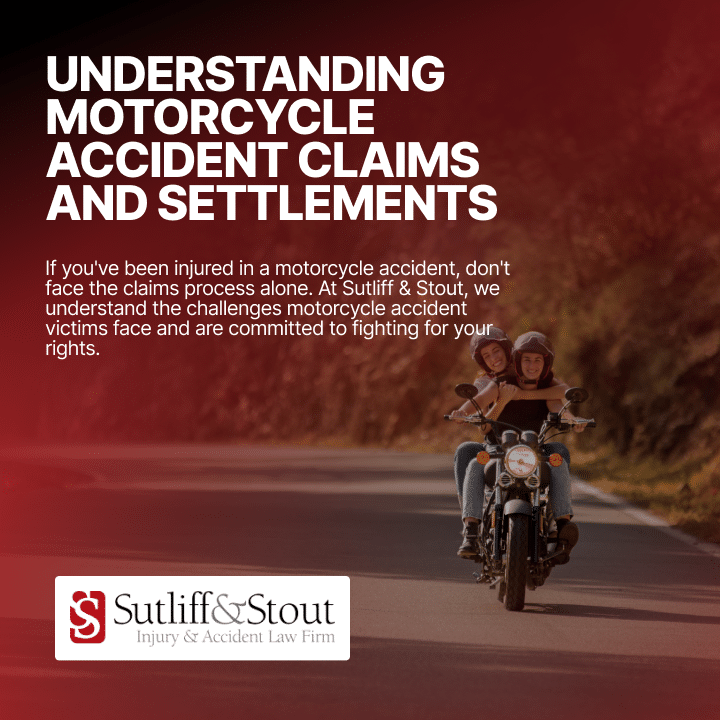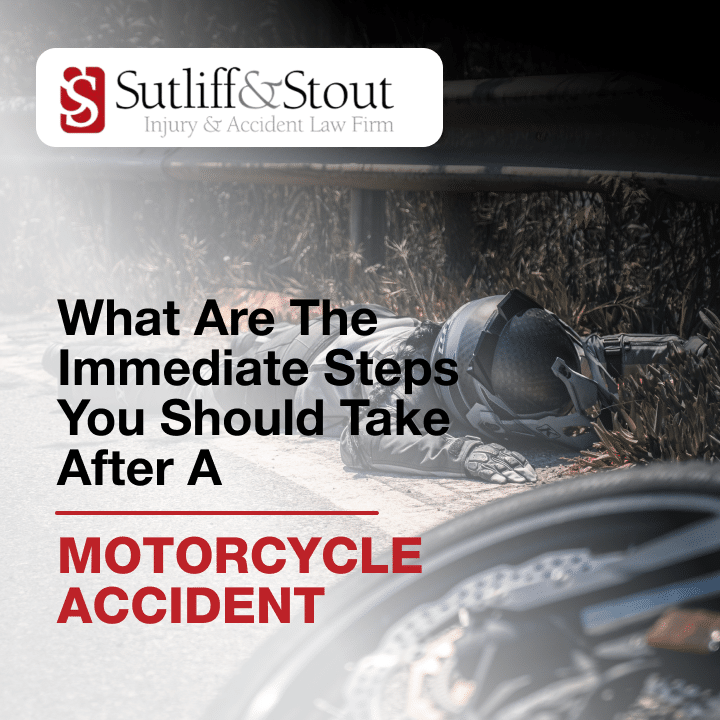Motorcycle accidents can be devastating—often leading to severe injuries and extensive medical bills. Understanding whether motorcycles get No-Fault benefits is crucial for riders who want to be properly protected.
No-Fault insurance laws vary widely across the United States, and knowing how these laws apply to motorcycles can make a significant difference in the financial outcome after an accident.
This guide will explore the intricacies of No-Fault insurance as it relates to motorcycles, helping riders make informed decisions about their insurance coverage.

Key Facts About Motorcycle Crashes
Motorcycle crashes remain a significant concern on U.S. roads, with fatality rates consistently high. Understanding the numbers behind these accidents can help in raising awareness and improving safety measures.
- Motorcycle fatalities increased by 19% from 2021 to 2022.
- Over the last decade, motorcycle fatalities have seen a 21% rise.
- In 2022, motorcyclists were nearly 29 times more likely to die in a crash per mile traveled compared to passenger car occupants.
- Non-fatal injuries in motorcycle crashes have decreased by 8% over the past year.
Motorcycle Crash Statistics
| Year | Total Fatalities | Fatality Rate (per 100 million VMT) | Percentage Increase in Fatalities |
|---|---|---|---|
| 2022 | 5,932 | 0.57 | 19% |
| 2021 | 4,973 | 0.48 | 15% |
| 2020 | 4,775 | 0.43 | 7% |
Overview of No-Fault Insurance and Motorcycles
No-Fault insurance is designed to ensure that, after an accident, the injured party’s insurance company pays for their medical expenses and lost wages, regardless of who caused the accident. This system is intended to reduce litigation and speed up the compensation process.
However, when it comes to motorcycles, the application of No-Fault insurance becomes more complex.
Motorcycles are often treated differently under the law, which can leave riders without the coverage they might expect from their insurance.
Definition of No-Fault Insurance
No-Fault insurance is a type of car insurance where your own insurance company pays for your injuries and damages after an accident, no matter who was at fault.
The idea is to streamline the process of getting financial help after an accident, minimizing delays and reducing the burden on the legal system. But here’s the catch—motorcycles aren’t always covered under these laws.
While cars, trucks, and other traditional vehicles typically benefit from No-Fault insurance, motorcycles are often excluded or treated under different rules.
Purpose and General Application in Motor Vehicle Accidents
The purpose of No-Fault insurance is to ensure quick payment for medical treatment and other losses, such as lost wages, without needing to establish fault.
In standard motor vehicle accidents, this system helps injured parties avoid lengthy and costly court battles. Instead, they receive immediate assistance—typically up to a specified dollar amount.
Some states require motorcyclists to carry separate medical coverage, which can leave gaps in protection if they’re not properly insured.
Common Misconceptions About Motorcycles and No-Fault Coverage
Many riders assume that their standard motorcycle insurance policy will automatically provide the same benefits as a car insurance policy under No-Fault laws. This is a common misconception.
In reality, standard motorcycle insurance often excludes No-Fault benefits, leaving riders without coverage for medical bills and lost wages after an accident.
Another misconception is that if a motorcyclist is injured in an accident involving a car, they will automatically receive No-Fault benefits.
This is not always the case—many factors, such as the specific laws of the state and the type of insurance carried by the parties involved, play a role in determining coverage.
Legal Categorization of Motorcycles Under No-Fault Insurance Laws
Motorcycles are often categorized differently than cars under No-Fault insurance laws.
In many states, they are not considered “motor vehicles” for the purposes of No-Fault coverage, which means that motorcyclists may not be entitled to the same benefits as drivers of cars or trucks. This categorization can significantly impact a rider’s ability to recover costs after an accident.
For instance, in some states, if a motorcyclist is injured in an accident that does not involve another motor vehicle, they may not be eligible for any No-Fault benefits at all.
This legal distinction is one of the reasons why motorcyclists need to be particularly careful when selecting their insurance coverage.
Differences Between Motorcycles and Other Vehicles Under No-Fault Laws
The differences between motorcycles and other vehicles under No-Fault laws are critical for riders to understand.
Unlike cars, motorcycles are often seen as higher-risk vehicles, which means they might be excluded from standard No-Fault protections.
For example, while a car driver might receive automatic coverage for medical expenses after an accident, a motorcyclist might not.
This difference is due to the higher likelihood of severe injury in motorcycle accidents. In some cases, motorcyclists may need to carry additional insurance policies to cover what No-Fault would typically pay for a car driver.
States Where No-Fault Laws Apply to Motor Vehicles
No-Fault laws are in place in several states across the U.S., including Florida, Michigan, and New York.
In these states, drivers are required to carry No-Fault insurance, which covers their medical expenses and other losses after an accident. However, the application of these laws to motorcycles varies widely.
In some of these states, motorcycles are included under No-Fault laws, meaning riders have access to the same benefits as car drivers. In others, motorcycles are excluded, requiring riders to carry separate coverage.
Importance of Understanding These Rules for Motorcyclists
Understanding the rules of No-Fault insurance is not just about legal compliance—it’s about financial protection.
Motorcyclists who are unaware of how No-Fault laws apply to them might find themselves without coverage when they need it most.
This lack of understanding can lead to significant out-of-pocket expenses for medical care, lost wages, and other accident-related costs.
Potential Financial Implications for Motorcyclists Without No-Fault Benefits
The financial implications for motorcyclists without No-Fault benefits can be severe.
Without coverage, riders are responsible for paying all their medical bills, rehabilitation costs, and lost wages out of pocket. This burden can quickly add up, leading to financial strain or even bankruptcy.
For instance, the average cost of a hospital stay for a motorcycle accident injury can exceed $50,000, not including follow-up care and rehabilitation.
Without No-Fault benefits, these costs must be paid by the rider or through other insurance, which may not cover everything.
General Rules for Motorcycles and No-Fault Insurance
Motorcycles are often treated differently under No-Fault insurance laws, which can have significant implications for riders. Understanding the general rules that apply to motorcycles is essential for ensuring that you have the right coverage in place.
Eligibility for No-Fault Benefits
Eligibility for No-Fault benefits is a crucial factor for motorcyclists to understand, as it determines whether they can access financial support for medical expenses and lost wages after an accident.
No-Fault insurance is designed to provide coverage regardless of who caused the accident, but this coverage is not always extended to motorcyclists.
Here are the main factors that determine eligibility:
- In many states, motorcycles are excluded from No-Fault laws because they aren’t classified as “motor vehicles.” This exclusion often prevents motorcyclists from automatically receiving benefits.
- Eligibility often depends on whether another motor vehicle, like a car or truck, is involved in the accident.
- Motorcyclists with added coverage like Personal Injury Protection (PIP) or MedPay may qualify for benefits, even if their state’s No-Fault laws exclude motorcycles.
- Insurance Terms
- Some states have specific exclusions that limit or entirely remove No-Fault benefits for motorcyclists
Coverage and Limitations for Motorcyclists
Motorcyclists often face more restrictions in coverage compared to car drivers.
While No-Fault insurance typically covers medical bills and lost wages, many states exclude motorcycles, requiring riders to purchase separate policies like Personal Injury Protection (PIP) or MedPay.
These policies, however, may not offer the same level of coverage, often capping benefits at lower amounts and excluding non-medical expenses like lost wages.
Understanding these limitations is crucial, as relying solely on basic health insurance could leave significant gaps in coverage.
The Importance of Liability Insurance for Motorcyclists
Liability insurance is critical for motorcyclists due to the limitations in No-Fault coverage. This type of insurance protects you financially if you are at fault in an accident, covering damages to others’ property and injuries.
Given the high costs of medical bills and potential lawsuits, it’s advisable for motorcyclists to carry more than the minimum required liability coverage.
Without sufficient coverage, the financial consequences could be devastating, potentially leading to significant personal debt. Ensuring robust liability coverage is a key step in protecting your financial future.
Legal and Financial Implications for Motorcyclists Without No-Fault Benefits
The absence of No-Fault benefits can have serious legal and financial consequences for motorcyclists.
When an accident occurs, the costs associated with medical care, rehabilitation, and lost wages can quickly add up, and without the safety net provided by No-Fault insurance, riders might find themselves in a precarious financial situation.
Consequences of Exclusion from No-Fault Benefits
When motorcyclists are excluded from No-Fault benefits, the financial and legal consequences can be severe.
Without the protection of No-Fault insurance, riders must rely solely on their health insurance or personal resources to cover the costs associated with an accident.
This situation can quickly become overwhelming, especially in cases involving serious injuries or long-term recovery.
Key consequences of exclusion from No-Fault benefits include:
- High Medical Bills
- Lost Wages
- Legal Challenges
- Limited Coverage Options
- Financial Hardship
Understanding these consequences is crucial for motorcyclists who want to protect themselves from the financial risks associated with exclusion from No-Fault benefits. It highlights the importance of securing comprehensive insurance coverage to mitigate these risks.
Legal Avenues for Compensation Outside of No-Fault Coverage
Without access to No-Fault benefits, motorcyclists may need to pursue legal action to recover damages after an accident.
This can involve filing a lawsuit against the at-fault driver to seek compensation for medical expenses, lost wages, and other damages.
However, this process can be lengthy and complex, requiring the injured motorcyclist to prove the other driver’s negligence.
Even if successful, the compensation awarded through a lawsuit may not fully cover all the expenses incurred, especially if the at-fault driver has limited insurance coverage.
Legal action can provide some relief, but it often comes with its own set of challenges and uncertainties.
Importance of Having Sufficient Liability Insurance
In the absence of No-Fault benefits, having sufficient liability insurance becomes even more critical.
Liability insurance can help cover the costs of damages if the motorcyclist is at fault in an accident.
Without adequate liability coverage, a rider could be held personally responsible for paying out-of-pocket for medical bills, property damage, and other expenses related to the accident.
This financial liability can be devastating, potentially leading to significant debt or even bankruptcy.
Ensuring that you have robust liability coverage is essential for protecting yourself financially in the event of an accident, especially when No-Fault benefits are not available.
The Role of Lawsuits in Recovering Damages for Motorcyclists
For motorcyclists who are excluded from No-Fault coverage, lawsuits can play a crucial role in recovering damages after an accident.
Filing a personal injury lawsuit allows the injured motorcyclist to seek compensation from the at-fault party, potentially covering medical bills, lost wages, and pain and suffering.
However, the outcome of a lawsuit is never guaranteed, and the process can be time-consuming and stressful.
Additionally, if the at-fault driver has insufficient insurance or assets, the compensation awarded may not be enough to cover all the expenses.
Protect Yourself with Comprehensive Legal Support
If you find yourself overwhelmed by the legalities or uncertain about your coverage, it’s important to seek professional guidance.
Contact Sutliff & Stout, your Houston motorcycle accident attorney and Houston car accident lawyers at (713) 405-1263. They can help ensure you’re fully protected and receive the compensation you deserve after an accident.
Don’t wait until it’s too late—reach out today for the support you need.
- What is a Catastrophic Injury? - January 30, 2025
- Essential Guide for Pedestrians Hit by Cars in Texas - January 30, 2025
- How to File a Wrongful Death Lawsuit in Texas - January 15, 2025








 (713) 405-1263
(713) 405-1263  550 Post Oak Blvd, Suite 530
550 Post Oak Blvd, Suite 530